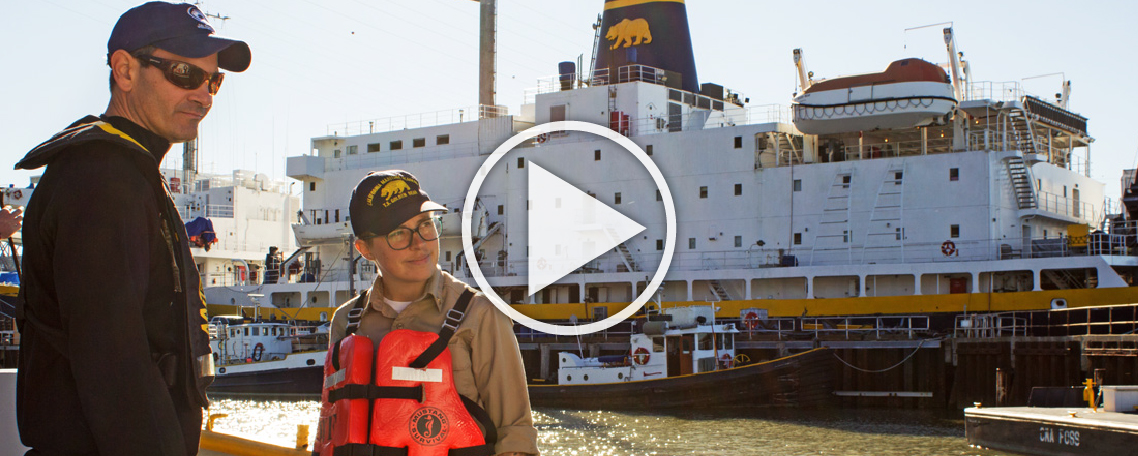Given a choice,
Alex Parker, Ph.D., doesn't prefer a typical college classroom when teaching his oceanography courses. Rather, he wants his students on a vessel, out in the open sea, water thrashing, wind blowing, and all hands in the salty ocean water.
That makes the bayside setting of
California State University Maritime Academy — tucked in a quiet cove at the northern end of San Francisco Bay with the 500-foot training ship "Golden Bear" docked at the campus — perfect for Dr. Parker's research and that of his students.
When the associate professor of oceanography came to Cal Maritime in 2013, knew he wanted to encourage the same passion for immersive research in his students that he still feels when studying microorganisms in marine ecosystems in the Antarctic and Pacific.
"Ocean sciences is one of the areas in which the CSU is very strong … What I have tried to do since arriving [here] is build the marine science program in the [same] way we do other things on campus, which is with a hands-on, apprenticeship style," explains Parker, who also conducted research at
San Francisco State University.
Cal Maritime's relatively small size (it serves about 1,200 students) and status as one of just seven degree-granting maritime academies in the U.S. have created a climate ripe for experimentation and innovation.
Parker seized on this spirit to figure out how to boost the 40-year-old marine science program. He started by launching the Oceanography Club, which exposes students to careers, internships and financial aid in marine science.
In 2016, he introduced the school's first marine biology lab course. "We take advantage [of the fact] that we have this waterfront campus and fleet of vessels," Parker explains of the oceanfront location in Vallejo, California.
He now leads students in conducting surveys of the San Francisco Estuary, the place where the Pacific tide meets the Sacramento and San Joaquin Rivers. Undergraduates might attach acrylic plates to the dock at the Cal Maritime harbor, for instance, so they can follow marine organisms that set up a home on the plates.
"When I talk about the scientific method and experimental design, we learn by conducting these experiences ourselves," he says. "Our students are on the deck of the 'Cub,' [a training vessel at Cal Maritime,] gathering oceanographic information and learning. They are scientists."
 x
x
A Breath of Fresh (Sea) Air
Getting outside to learn how to do research isn't just fun. By taking students out of a traditional classroom, Parker is encouraging a curiosity that's critical to good research.
"I could cover a whole lot more if I would just blast through a 75-minute lecture," he notes. "But I would argue the retention of skills is much more permanent and long-term… It's a much more valuable experience."
What's more, students in Parker's classes get a taste of what it's like to collaborate with students, faculty and staff from CSU coast adjacent-campuses like
San Francisco State as well as the
California State Lands Commission, the
U.S. Geological Survey, and the
CSU Council on Ocean Affairs, Science and Technology (COAST).
"There is nothing like the experience of putting students out in the environment and allowing them the time and space to ask their own questions and make their own discoveries," explains Parker, who grew up exploring the waters and coastline of New England with his family.
"The payoff is the ability to spark a passion for the subject."
His students clearly agree. Third-year student Shaun Teter, a marine transportation student minoring in marine science, raves about Parker's Oceanographic Instrumentation and Analysis course: "Students like myself … go out on the water, deploy advanced oceanographic instruments, collect real data, and analyze it in the school's laboratory."